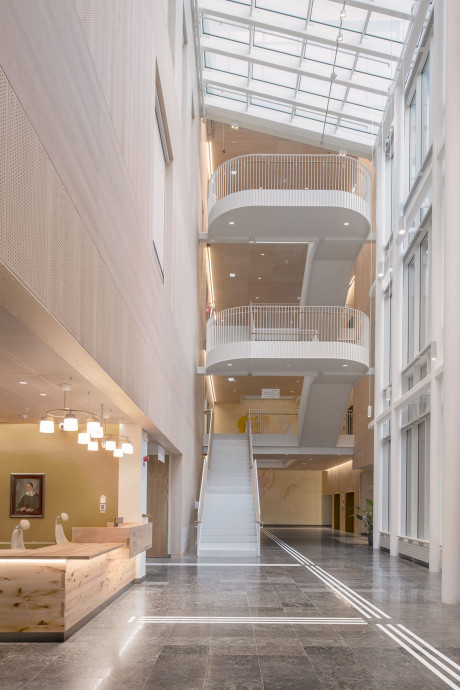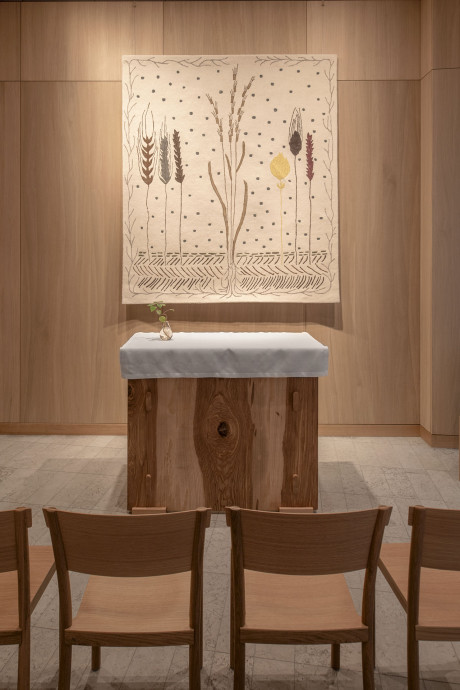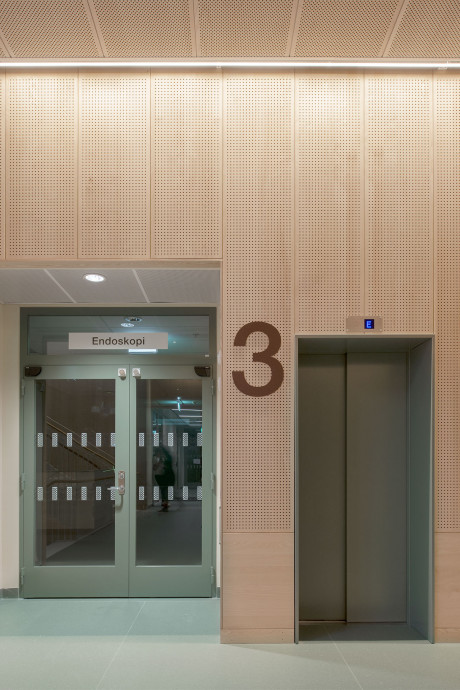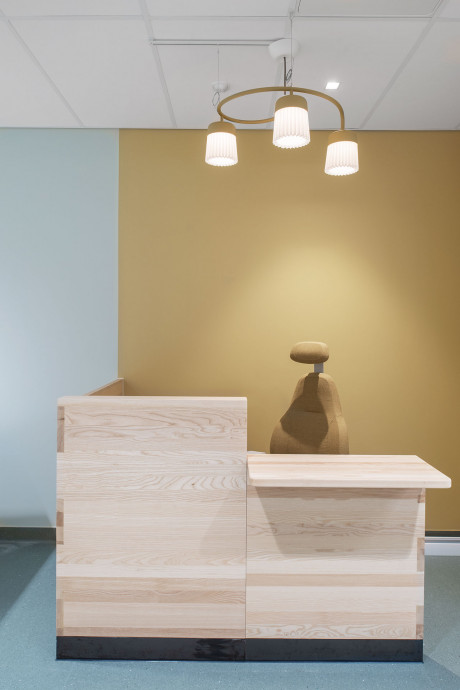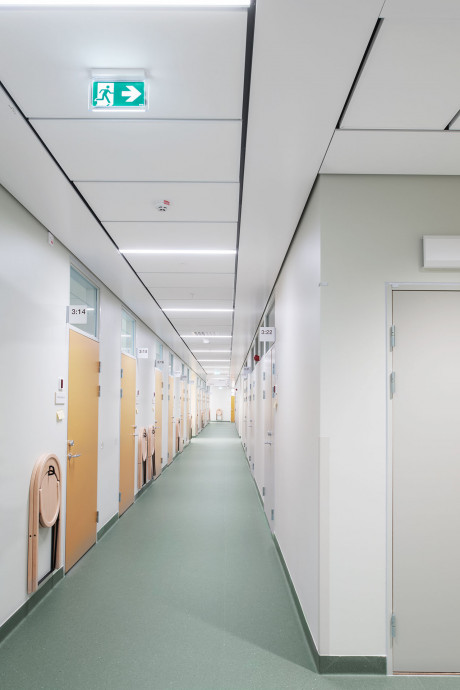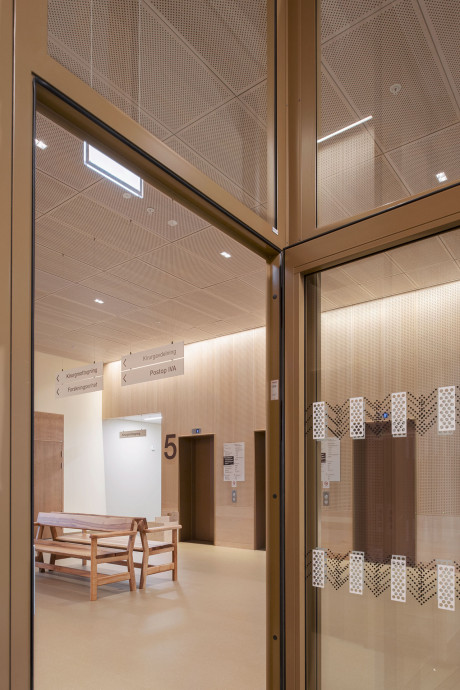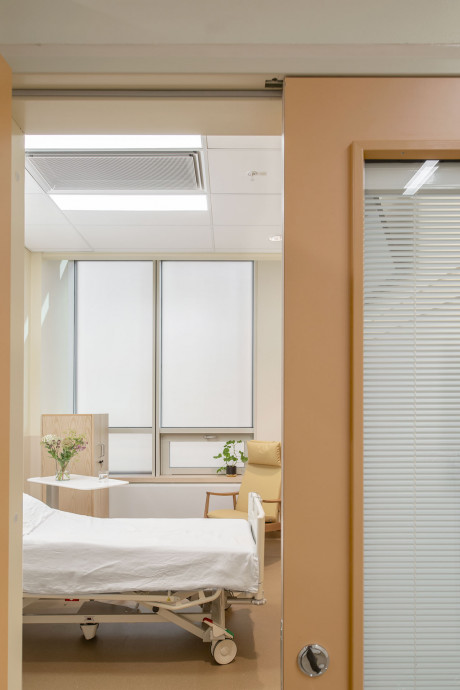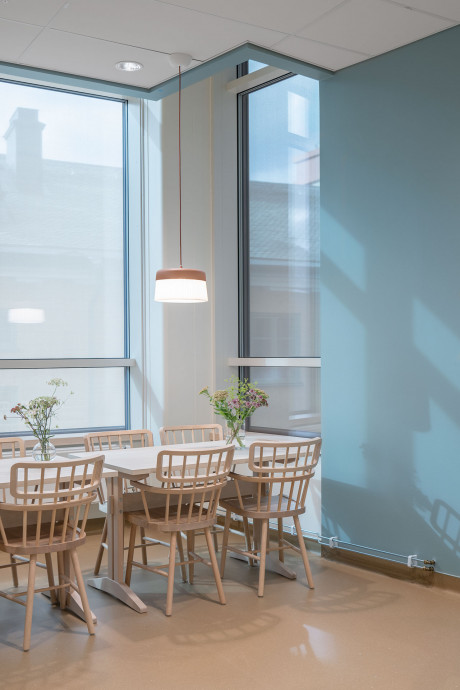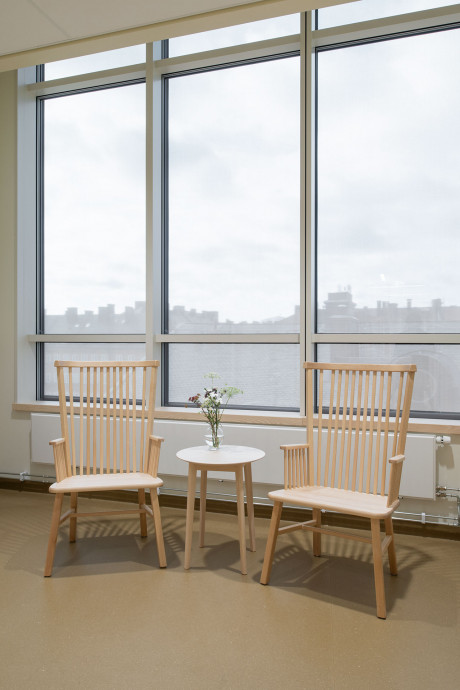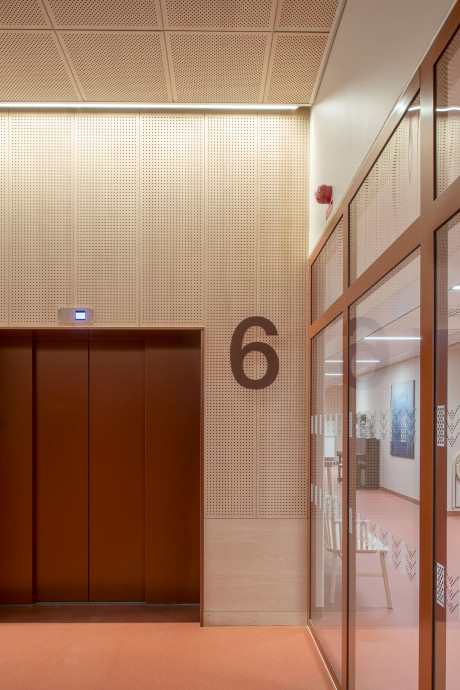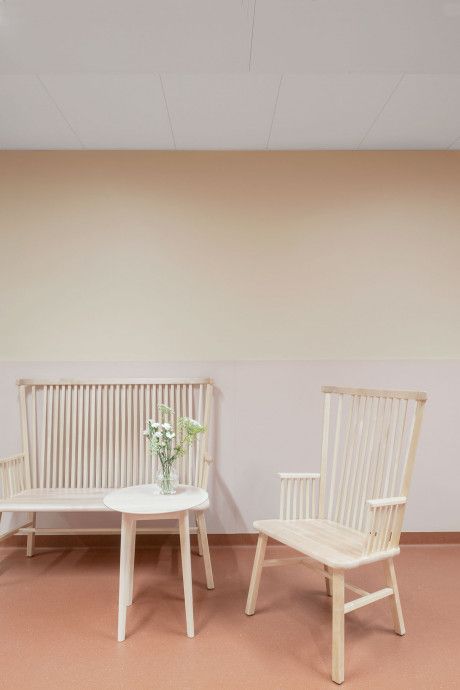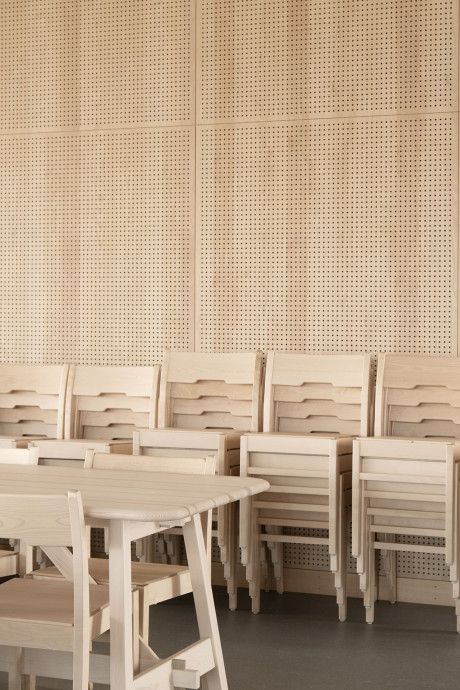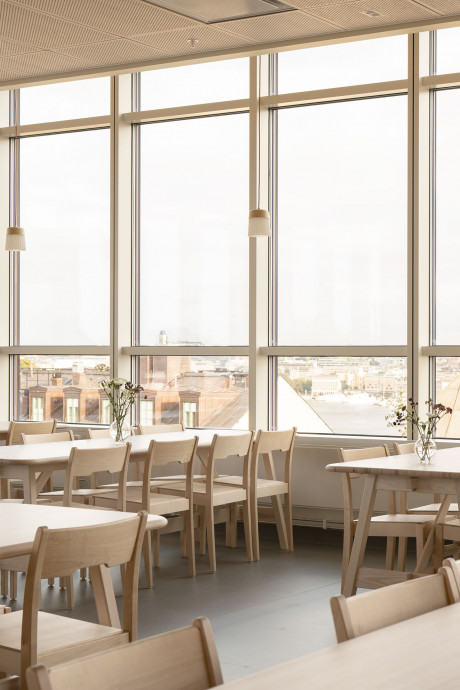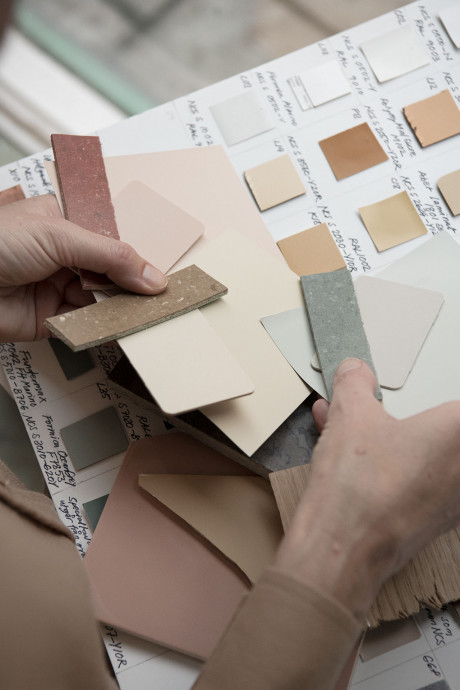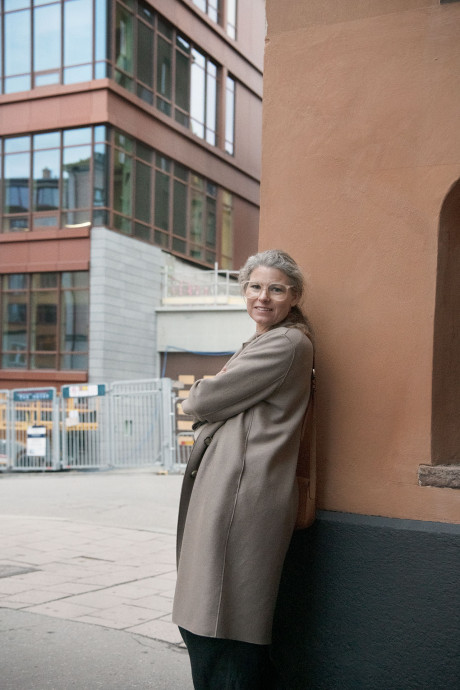Ersta Nya Sjukhus
Based on Ersta’s wishes for a calm and nurturing environment, Emma Olbers (since 2018) has developed a color and material concept for Ersta’s new hospital’s fixed and loose furnishings. Tengbom has been the responsible architect.
- In addition to Ersta’s wishes, it was important for me to create a picture of history and the local environment. I walked around and looked at the buildings on Erstaklippan and tried to form a picture of the visuals that are Ersta. For me, the experience of the ocher yellow color was very strong, a color you can see recurring on several buildings and on the wall, the oldest preserved part from the history of the First Deaconess, says Emma Olbers.
The foundation of the concept is partly based on what I call the visual heritage and Ersta’s history, but also on Ersta’s core values, see the human being. The key words in the work with the interior have been safe, calm, genuine and welcoming.
We have tried to create a safe environment with partly darker floors that give a stable feeling and then with ocher on important parts of the interior for the patient, which increases orientation. The carpets on floors 2-7 are specially made and Emma has colored them precisely to achieve the warm earth tones. We have also been honest in the choice of materials, that materials are what they claim to be, both visually and tactilely, for example by using solid wood in the reception counters.
- The entire interior concept is based on the feeling of being treated personally. That security is expressed, for example, in that we have floors that “land”. That we chose materials and carpets that are darker, and so the lighter colors go upwards instead. That in itself creates a feeling that you, as a visitor, have landed. Because this is something very stable, says Emma Olbers.
Emma has tried to create a calm and harmonious environment through a palette of warm and light earth colors and that the colors go tone on tone.
- From the old park trees that were cut down to make room for the new building, we have made part of the interior; the main reception, the altar and the benches, which creates an authentic, genuine feeling with real history, says Emma Olbers.
Another historical detail, of which you can see many examples in Ersta’s museum, is the knotted lace – a craft the Ersta sisters were widely known for. Emma has stylized one of the tips and created a contrasting marking that is visible throughout all the large glass sections around the hospital.
The lamp “Marie” is another historical detail that has been given a modern design by Emma and produced by Ateljé Lyktan. - The inspiration for the design of the lampshade comes from the sisters’ hats that all the deaconesses, as well as nurses, wore when the First Deaconry was founded more than 170 years ago .
The wall textiles in the devotional room are specially made for Ertsa, designed by Emma and produced by Asplund. Here the wheat symbolizes the bread of life. The first wheat varieties Emmer, Enkorn and Spelt are seen on the left and Swedish cultivars on the right. Olbers also wanted to raise thoughts about the climate crisis we are in. We need greater biological diversity, but also large roots that can bind carbon. The center of the textile is therefore adorned by the newly developed perennial wheat, Kernza, with its strong root system.

